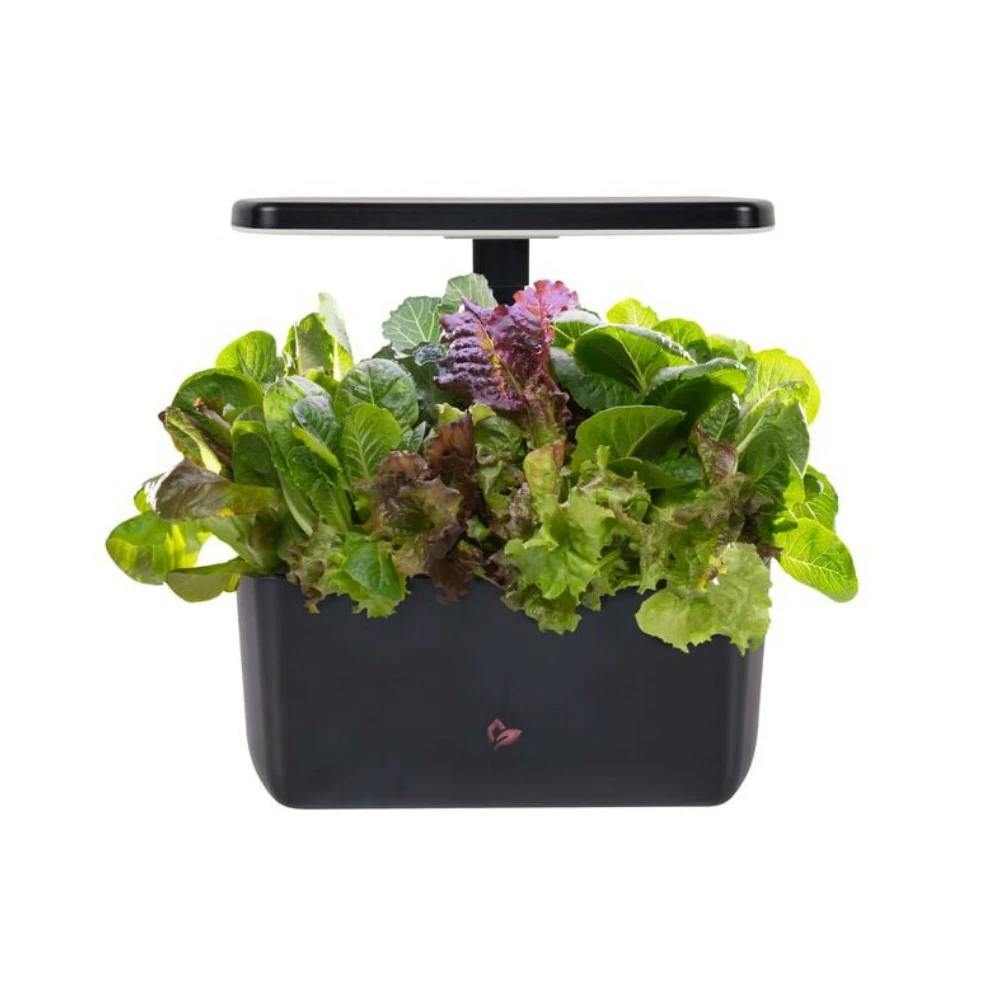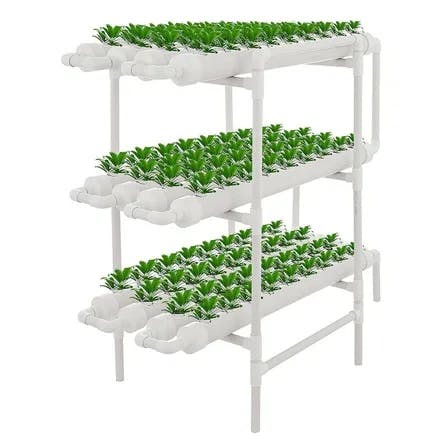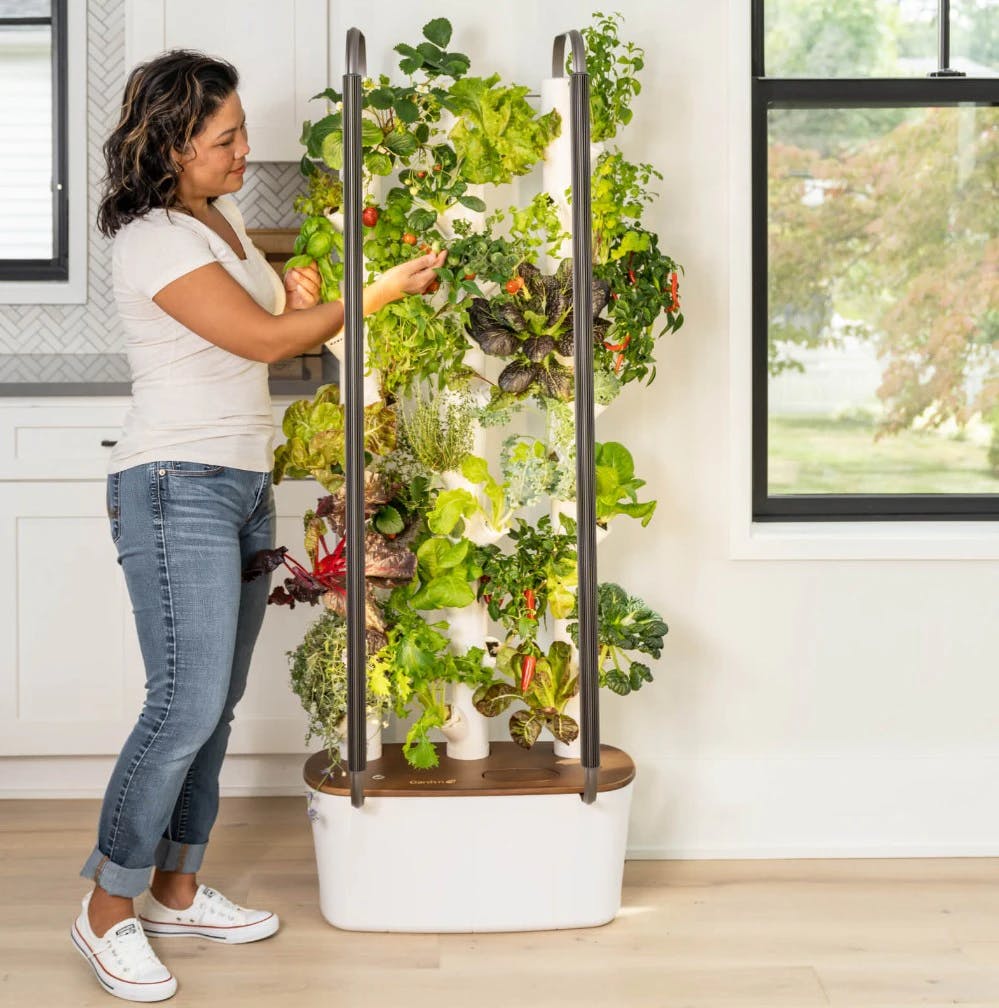How To Start A Garden This Spring, No Matter Where You Live
Gardening can be intimidating, especially if you’re low on outdoor space, but there are options for every living situation if you get creative.

Growing up, I lived on a dead-end dirt road surrounded by a lot of farmland. My mom had an incredible green thumb and could raise just about anything that grows, blossoms, or sprouts, and we reaped the benefits of a flower garden, vegetable garden, and even indoor hydroponics (before Aerogarden made them cool).
The idea of not having space for a garden had never really occurred to me, at least until I left college and started living in urban areas. I had started accruing a collection of Trader Joe’s houseplants (one of which was tragically disfigured against the front windshield of the U-Haul, RIP little guy), but I missed the flowers and usefulness of, well, a real garden. Sadly, urban life made me reduce my expectations, at least initially. When I first moved to Washington D.C., I remember texting a friend and asking if she thought it was legal to take dirt from the National Mall, since I only needed a little bit to repot something. Rather than giving me an answer, she laughed at the joke I didn’t realize I’d made. Okay, so how the heck were you supposed to garden around here?
The ‘Burbs
Alright, let’s begin our non-rural gardening adventure on easy mode: Here’s what to do if you live in the suburbs. If you’re planning to start anything from seed (especially things like veggies!), you’ll probably want to start your outdoor garden, well, indoors. It’s best to let seeds get a head start while it’s still warming up outside, likely anywhere from 2-10 weeks before the date of the last frost in your area, which you can look up using your zip code and the online Farmer’s Almanac. Most seeds do best kept warm and damp between two layers of paper towels, either on a windowsill in the sun or under some grow lights, if you have them. Once seeds sprout, you can either move them directly outside, assuming the weather has warmed up enough, or into small peat pots to give them an extra strong start.
If you’re not starting from seeds, you get to skip the germination process, but don’t just throw flowers and other plants right in the ground! It’s best to make sure to separate the roots a bit to help them adjust to their new environment. You can use a tool, like a knitting needle, or if you don’t have a fresh manicure, just dig your nails in.
Once you have your seedlings or plants from a nursery, you’ll want to figure out where in your yard gets 7-8 hours of sunlight per day, at least for most veggies and flower varieties. There might be some trade-offs with where is most convenient or aesthetic, but picking a spot with too little light will only end up disappointing if your flowers don’t bloom or your veggies end up with lame harvests. Second, pay attention to drainage, and seriously consider buying a few bags of topsoil. Most of the dirt in your yard is just that – dirt. It’s not going to be nourishing for plants, and especially if it’s in an area that’s always damp, it can end up rotting your roots rather than helping them grow.
If you’re growing outdoors, you may find out that you’re not the only one interested in your plants. Depending on where you live, bunnies, deer, and other cute but annoying garden enthusiasts may be thrilled to eat your hard work before you can enjoy it. If you plan on planting flower varieties that bunnies like, things like pansies, daisies, and marigolds, consider placing them somewhere bunny-inaccessible, like window boxes or raised gardens. For berries and veggies that deer might enjoy, you may also want to invest in chicken wire around your plants to keep them out. Finally, if you’re lucky enough to have a dog in the house, taking the fur from your dog brush and placing it around your garden is a great pesticide-free way to scare off other animals.
If You Can’t Grow Down, Grow Up
If you have outdoor space but can’t actually plant in the ground, say hello to your new best friend: raised planters. Whether you’re working with just a porch or your HOA just doesn’t allow planting, you may be pleasantly surprised at how little you have to compromise when doing a planter garden. Most vegetables, including tomatoes, snap peas, and peppers, do well in planters, as do most flowers. Planters also provide an advantage in terms of drainage, since they aren’t as susceptible to getting waterlogged as certain areas of your yard might be, making them ideal for things like sunflowers with sensitive roots.
One thing to consider with a raised bed is layering. While it might seem like you should just fill them to the top with soil, that’s a quick way to get mold and root rot since water will pool and sit at the bottom. Instead, layer rocks, gravel, mulch, and twigs to allow for better drainage. Raised beds do well on your porch, but can also be an indoor solution if you have enough room for them. Consider adding a trellis at the top for plants like tomatoes and peas that like to grow upwards, though you’ll have to manually weave their vines through.
Hydro Homies
One totally underrated way to grow plants is hydroponics. While it’s not always the most aesthetic solution, hydroponics can be wonderful for growing things if all you have to work with is an indoor space, since they allow you to grow things that wouldn’t get enough nutrients from being potted in normal soil indoors. Things like lettuce, herbs, and some smaller vegetable varieties do really well in hydroponic systems, so if you’re looking to beef up your salad game, they’re worth considering.
Hydroponic systems can be as small as a countertop system or as large as a standing tower, and you’re really only limited by the amount of space you have to spare. If you’re growing in a basement or other place with poor light though, it’s worth adding grow lights. Hydroponic systems allow plants to grow super fast, so the added light is especially important. Here are some beginner-friendly hydroponics options:
AeroGarden Harvest 2.0, $90

Boshen Growing Kit, $150

Gardyn Home Kit 3.0, $799

If you’re looking for more flowers and plants this spring, you’ll be happy to know there are solutions for every living situation. Whether you’re a beginner homesteader or still living the studio apartment life, you can start a garden no matter where you live!